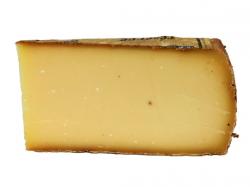Salting Cheese
September 6, 2016 | 1 min to read

Proper cheese salting requires an understanding of the best storage, handling and application practices in order to achieve a safe, uniform product, as uneven salting of the curd can lead to cheese defects.
There are three main ways to salt cheese: dry salting; brining; and dry surface rubbing. Nicole Durch, Senior Technical Service Representative at Cargill Salt, assisted Dean Sommer of the Wisconsin Center for Dairy Research in developing the article “Salting of Cheese: Simple or Not?”, featured in a 2016 publication of Dairy Pipeline.
Dry salting is the direct addition of salt crystals to the surface of fresh curd. For cheese varieties like Cheddar, Colby, and Monterey Jack, traditionally dry salt can be applied manually on the curd by an operator who allows the agitation of the curd table to uniformly mix the salt into the curd. Larger cheese plants with enclosed finished vats or salting belts, can use filtered, dehumidified air to pneumatically convey the salt to the salting vat or belt where the salt is automatically distributed onto the curd.
To read the rest of the story, please go to: Cargill InPerspective™
